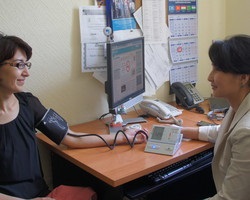
In a groundbreaking study published in the journal Advanced Science, researchers at Queen Mary University of London have unraveled the intricate mechanisms underlying the progression of arterial disease propelled by high blood pressure, also known as hypertension.
Led by Professor Thomas Iskratsch, the research delved into the realm of vascular smooth muscle cells (VSMCs), indispensable for regulating blood vessel tone and flow. Their discoveries illuminate a previously unknown pathway through which heightened pressure orchestrates a transformation within these cells, driving the formation of arterial plaques.
The team’s findings shed light on a critical process wherein the persistent strain of elevated blood pressure induces a metamorphosis in VSMCs, converting them into “foam cells.” These foam cells serve as the building blocks for atherosclerotic plaques, contributing significantly to the narrowing and stiffening of arteries.
Professor Iskratsch emphasized the pivotal nature of their discovery, stating, “This finding holds immense significance as VSMCs constitute a substantial portion of the foam cells that amass within arterial blockages.”
The transformation from functional muscle cells to foam cells under pressure is a groundbreaking insight, unlocking potential pathways for the development of new therapies. Understanding this shift at a cellular level provides a crucial foundation for interventions aimed at curbing or reversing the formation of these perilous arterial lesions.
The research team, employing cutting-edge imaging techniques, identified a crucial “mechanosignalling” pathway integral to this process. This pathway involves Piezo1, a pressure-sensitive protein, orchestrating alterations in lipid metabolism and gene activity within the cells. These revelations present a potential target for future therapies, aimed at intercepting specific pressure-sensitive points in the cellular structure.
“Our study provides a roadmap for the development of advanced therapies that could significantly benefit millions affected by the life-threatening consequences of arterial disease,” emphasized Professor Iskratsch.
These breakthrough insights mark a critical milestone in the quest for innovative treatments, potentially heralding a new era in combating the debilitating impact of arterial disease associated with hypertension.











